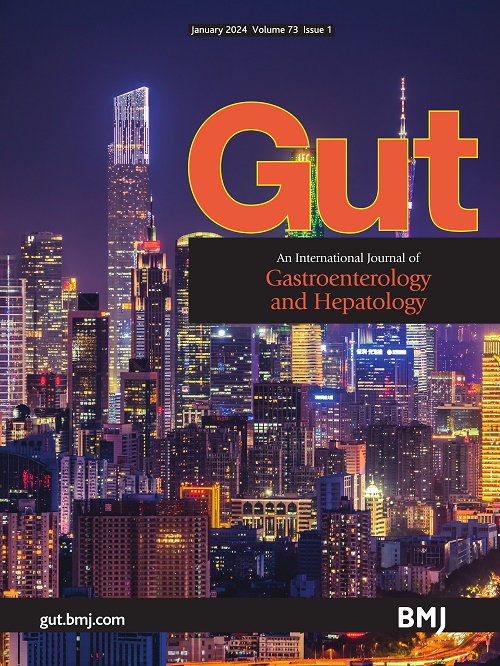区分胃轻瘫和功能性消化不良已经不够了
IF 25.8
1区 医学
Q1 GASTROENTEROLOGY & HEPATOLOGY
引用次数: 0
摘要
我们饶有兴趣地阅读了Camilleri和Talley关于胃轻瘫和功能性消化不良(FD)是否“真的”是可互换的“疾病”的评论他们为提高胃排空试验的可靠性所做的重大努力将加强护理和试验。然而,我们认为他们的仔细分析也可以作为更深入探究的起点,因为仅仅通过清空测试进行区分已经不够了。现在被广泛接受的是,FD和胃轻瘫标签反映了各种潜在病理生理的伞型综合征。这些潜在机制是两种综合征共有的,但在个体患者之间有所不同。有些是运动的,有些是感觉的,有些是重叠的。它们包括间质细胞(ICC)缺陷、调节功能受损、自主神经和幽门功能障碍、窦性低能、免疫激活、过敏和肠-脑轴失调这类因素中有几个可能会延迟胃排空,但这些因素都不是排空延迟的特异性因素。因此,排空最好被视为胃功能的综合测量,尽管在临床上很重要,但它只捕获了许多疾病轴中的一个。面对这些重叠和异构的机制是必要的,因为它有助于解释几十年来……本文章由计算机程序翻译,如有差异,请以英文原文为准。
Differentiating gastroparesis from functional dyspepsia is no longer sufficient
We read with interest the commentary by Camilleri and Talley on whether gastroparesis and functional dyspepsia (FD) are ‘really ‘interchangeable’ diseases’.1 Their significant efforts to improve the reliability of gastric emptying testing will strengthen both care and trials. However, we submit that their careful analysis also serves as a starting point for deeper inquiry, because differentiation by emptying testing alone is no longer sufficient. It is now widely accepted that both FD and gastroparesis labels reflect umbrella syndromes grouping diverse underlying pathophysiologies. These underlying mechanisms are shared by both syndromes, but vary between individual patients. Some are motor, some are sensory, some overlap. They include interstitial cell of Cajal (ICC) deficits, impaired accommodation, autonomic and pyloric dysfunction, antral hypomotility, immune activation, hypersensitivity and gut-brain axis dysregulation.2 Several such factors may delay gastric emptying, but delayed emptying is specific to none of them. Emptying is thus best appreciated as an integrative measure of gastric function, and while clinically important, only captures one disease axis among many. Confronting these overlapping and heterogeneous mechanisms is essential, because it helps explain decades of …
求助全文
通过发布文献求助,成功后即可免费获取论文全文。
去求助
来源期刊

Gut
医学-胃肠肝病学
CiteScore
45.70
自引率
2.40%
发文量
284
审稿时长
1.5 months
期刊介绍:
Gut is a renowned international journal specializing in gastroenterology and hepatology, known for its high-quality clinical research covering the alimentary tract, liver, biliary tree, and pancreas. It offers authoritative and current coverage across all aspects of gastroenterology and hepatology, featuring articles on emerging disease mechanisms and innovative diagnostic and therapeutic approaches authored by leading experts.
As the flagship journal of BMJ's gastroenterology portfolio, Gut is accompanied by two companion journals: Frontline Gastroenterology, focusing on education and practice-oriented papers, and BMJ Open Gastroenterology for open access original research.
 求助内容:
求助内容: 应助结果提醒方式:
应助结果提醒方式:


